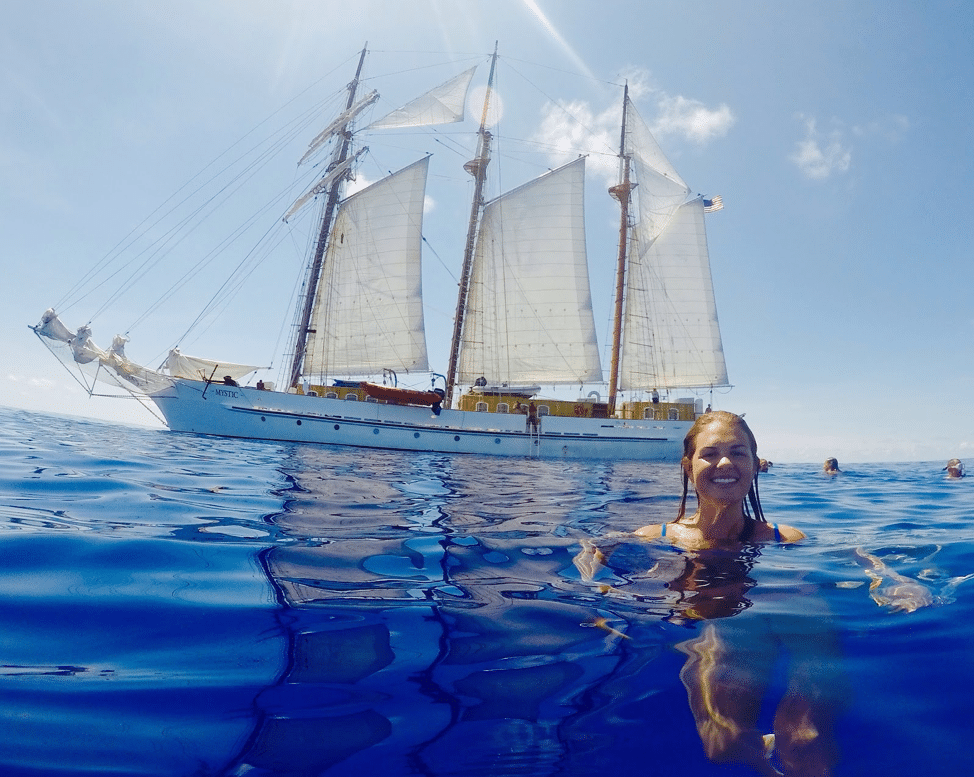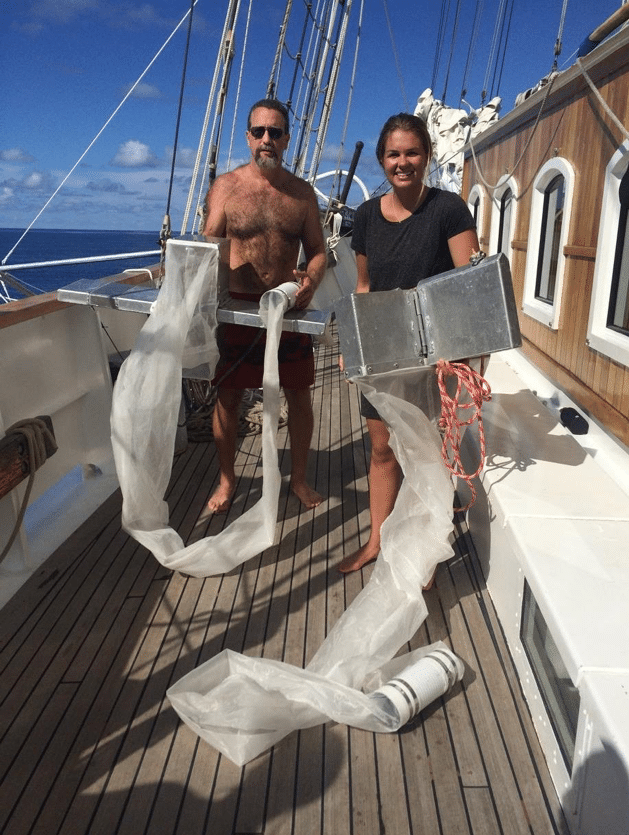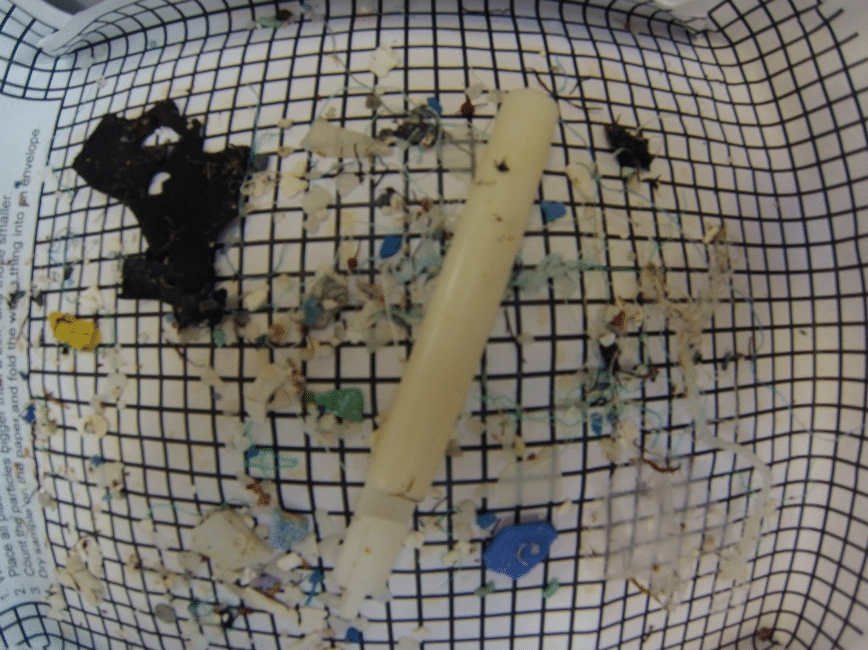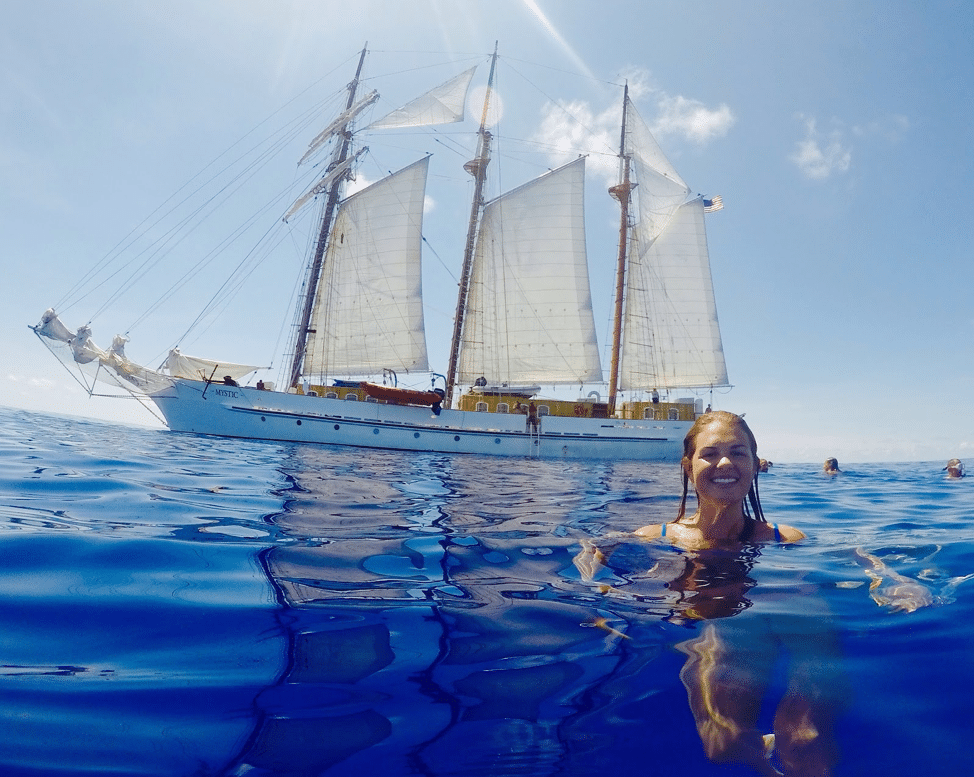Growing up in The Bahamas, I was in and around the ocean every day. All parts of my life revolved around the ocean; tourism and fishing are the main industries and, on a personal level, all of my favorite memories with family and friends involved the water. While I never took the wonders of the ocean for granted, I also did not think too much about the harms of plastic. Of course, we would see plastic wash up on the beach, and I knew of basic ways to help combat plastic pollution – cutting soda can holders, bringing reusable bags to the grocery store and refusing plastic straws. However, I was focused on the parts of the problem I could see.

Sailing The Sargasso Sea
In 2015, I was chosen to be part of an expedition to sail from The Bahamas to Bermuda through the Sargasso Sea to collect microplastics with a non-profit called 5 Gyres. 5 Gyres “is a leader in the global movement against plastic pollution with more than 10 years of expertise in scientific research and engagement on plastic pollution issues,” and has conducted 19 expeditions in the ocean, lakes, and rivers to conduct research on plastic pollution.
A day during the expedition started in shifts manning the steering and sails of the ship. Then, we would set up our experiments for the day. These consisted of trawling an instrument that filtered ocean water through a fine mesh sieve that would capture even the smallest pieces of microplastic. We would conduct varying studies in different regions and also at different depths to get a true picture of plastics in the Sargasso Sea. Once the samples were received, we would then empty the contents of the sieve and pick through what was captured. Often, we were using tweezers and magnifying glasses to be able to see the tiny pieces of plastic.

Our Microplastic Findings
What we found is that plastic pollution is all consuming and everywhere. I had always thought of oceanic plastic pollution in terms of the ‘Pacific Garbage Patch’ – an island of plastic that could be potentially seen and cleaned, just as you would at a beach cleanup. However, the reality is that it is a ‘Plastic Smog’ – something much more intangible and alarming. Exacerbated by sun and salt exposure, plastics break down into small particles almost invisible to the human eye. However, just because you cannot see them does not mean they are not there. Through 5 Gyres’ expeditions, as well as through a large citizen science push, we now know that there are more than 5 Trillion Plastic Pieces weighing over 250,000 tons in the sea. This is staggering and to put it into perspective, there are 51 trillion microplastic particles in the ocean today, 500x the number of stars in our galaxy.
This has a major impact on the oceanic ecosystem as toxic chemicals such as PCBs and DDTs are absorbed by pieces of plastic in the ocean. Fish, crustaceans, marine mammals and birds ingest these chemicals which may impact their reproductivity, growth and susceptibility to illness. Studies have shown that microplastics are present inside of the stomachs or intestinal tracts of many of the fish species that we eat. These chemicals may be passed onto humans through consumption.

Reducing Our Plastic Consumption
While oceanic microplastics may seem like an overwhelming problem to solve, there are things we can do day-to-day to help combat plastic pollution.
- Refuse single use plastic- bring your own grocery bags, coffee cups, straws and utensils when you leave the house.
- Take a look at your personal care products and ensure they do not have microbeads in them. Microbeads are tiny pieces of plastics used for exfoliation and you will see them on the ingredients list as “Polypropylene” or “Polyethylene”. There are many natural alternatives to these plastic microbeads so make the switch.
- Avoid synthetic clothing as the fibers that come out of the clothing during a wash cycle are mostly small pieces of plastic.
- This is not just a consumer fight. To fully win our fight against plastic pollution, we have to systematically change at the corporate and policy level.
- Vote with your dollars and support corporations who are leading the way in sustainability.
- Encourage your local elected officials to stay informed and join the fight against plastic pollution.
